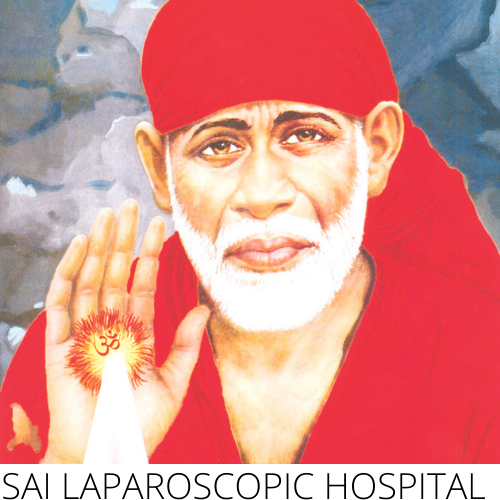Cystoscopy
What is a cystoscopy?
Your healthcare provider may use a cystoscopy to view the inside of the bladder and urethra. The bladder stores urine until it flows out of the body through a tube called the urethra.
A urologist, or urinary tract specialist, performs a cystoscopy. For the procedure, your doctor uses a cystoscope, a pencil-sized lighted tube with a camera or viewing lens. A cystoscopy helps specialists diagnose, and sometimes treat, urinary tract problems.

Who might need a cystoscopy?
Your healthcare provider may recommend a cystoscopy if you experience:
- Bladder control Issue such as urinary retention (being unable to empty the bladder all the way) or incontinence (not being able to control urine flow).
- Bladder Stones
- Blood in Urine (hematuria).
- Frequent urinary tract infections (UTIs).
- Painful urination(dysuria).
Why do healthcare providers perform cystoscopies?
Urologists use cystoscopies to diagnose and treat urinary tract problems. A cystoscopy can diagnose:
- Bladder Cancer or uretharal cancer
- Bladder stones.
- Bladder control problems.
- Enlarged prostate (bening prostatic hyperplasia).
- Urethral strictures and urinary fistulas.
- UTIs.
Treatments using cystoscopy
Your doctor may also use a cystoscope to:
- Get urine samples from ureters (the ducts that carry urine from the kidneys to the bladder).
- Inject dye for an X-ray procedure that tracks urine flow.
- Inject medication to stop urine leakage.
- Remove a ureteral stent (a tiny tube that holds open a ureter) placed during an earlier procedure.
- Remove bladder stones, abnormal tissue, polyps or tumors.
- Take small pieces of bladder or urethral tissue to biospy (examine in a lab).
- Treat urethral strictures (narrowing) or fistulas (holes that form between two areas).
What are the types of cystoscopies?
There are two types of cystoscopes. Your healthcare provider will use the one that works best for your specific procedure.
- Rigid: These cystoscopes don’t bend. Your doctor may pass instruments through the tube to perform biopsies or remove tumors.
- Flexible: Your doctor may use a bendable scope to examine the inside of the bladder and urethra and make a diagnosis.
How should I prepare for a cystoscopy?
Depending on the reason for the cystoscopy, you may have an outpatient procedure (go home the same day) or stay overnight in the hospital.
For most diagnostic procedures, your doctor uses a numbing gel so you don’t feel pain in your urethra. For a more invasive treatment cystoscopy, you may need sedation or general anasthesia. If you get sedation or general anesthesia, someone should drive you home after the procedure.
Follow your healthcare provider’s instructions on what to do before the procedure. You may need to not eat or drink for several hours before getting anesthesia. Your preparation will depend on the anesthesia type and why you’re having the cystoscopy. Generally, you will:
- Give a urine sample the day of the procedure to check for a UTI. If you have an infection, you’ll need treatment before you can get a cystoscopy.
- Urinate immediately before the procedure.
- Bring an updated list of medications and supplements.
- Stop taking blood-thinning medications, such as aspirin and warfarin (Coumadin®), but check with your provider before doing so.
- Tell your doctor if you might be pregnant. Regional and general anesthesia can harm an unborn baby.
How is a cystoscopy performed?
A cystoscopy may feel uncomfortable, but anesthesia keeps you from feeling pain. A diagnostic cystoscopy usually only takes about five minutes, but may take a little longer. If you’re having a biopsy or treatment, the procedure may take longer.
During a cystoscopy, your doctor:
- Slides a lubricated cystoscope through the urethra to the bladder.
- Injects sterile salt water through the cystoscope into the bladder. A stretched, full bladder makes it easier to see the bladder lining. You may feel like you need to pee.
- Looks at the inside of the bladder and urethra.
- Inserts small instruments through the cystoscope. Your provider uses these tools to remove tissue samples or tumors, if needed.
- Drains the injected liquid from the bladder or asks you to empty your bladder in the restroom.
What should I expect after a cystoscopy?
You may have belly pain, blood-tinged urine or pain when peeing for the first day or two after the procedure. You may also feel like you need to pee often and urgently. These problems should fade within 48 hours.
Your doctor may prescribe an antibiotic to prevent infection. To ease side effects, you can:
- Apply a warm, damp washcloth over the urethral opening or relax in a warm bath.
- Drink several glasses of water every day to flush out the bladder.
- Take an over-the-counter pain reliever such as nonstedoiral anti inflammatory drugs(NSAIDs).
What are the potential risks or complications of a cystoscopy?
A cystoscopy is a relatively low-risk procedure. Potential complications include:
- Bladder infection, perforation or spasms (painful cramps and urine leakage).
- Urethral scarring, narrowing or trauma.
- UTI.
When should I get my test results?
If you had a biopsy, it may take up to two weeks for your doctor to get the results.
When should I call the doctor?
Most post-procedure problems like painful urination and blood-tinged urine clear up within 48 hours. You should call your healthcare provider if problems last longer or you experience:
- Severely painful urination.
- Significant amount of blood or blood clots in urine.
- Painfully full bladder and inability to urinate.
- Signs of infection (fever, pelvic pain, strong-smelling or cloudy urine).
BETTER HEALTH CARE IS OUR MISSION
24/7 SERVICE. SAME DAY APPOINTMENTS ARE AVAILABLE.
9437306780/9861065328
sailaphospital@gmail.com
V4/3, Civil Township,Rourkela-04 769004
